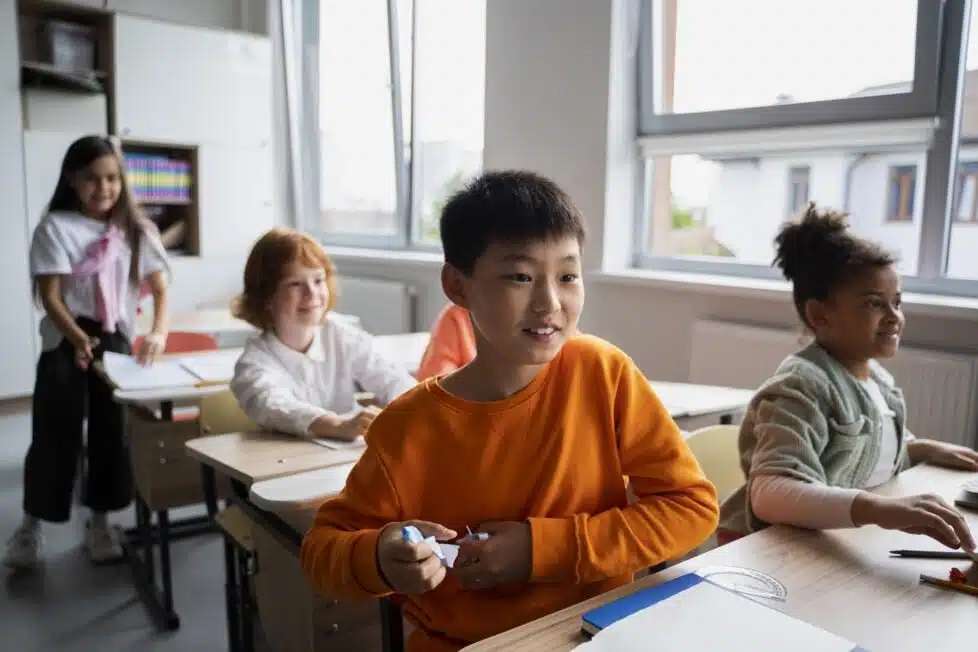Click here if you want to read this article in French.
When an adopted student arrives at school for the first time, teachers and family must work together to meet their needs. María Crespí Rupérez, psychopedagogue, speech therapist, psychomotor therapist and teacher, offers some advice on how to deal with this moment.
 Teachers are continuously trained in different techniques, acquire new knowledge and specialize in some alterations or difficulties that their students may have. But when it comes to adoption, they have very little knowledge about this process: most are unaware of the importance of certain aspects that are very relevant for adopted children and that have a direct impact on the emotional, social, affective and cognitive development of the students.
Teachers are continuously trained in different techniques, acquire new knowledge and specialize in some alterations or difficulties that their students may have. But when it comes to adoption, they have very little knowledge about this process: most are unaware of the importance of certain aspects that are very relevant for adopted children and that have a direct impact on the emotional, social, affective and cognitive development of the students.
When an adopted child arrives at school for the first time, it is important that there is a great deal of collaboration between family and teachers in order to find the best way to attend to his or her personal characteristics. It is probably their first approach to social relations, their first separation for hours from their parents and their first unfamiliar space. This school context is a new change, another one in a few months.

They often show agitation, restlessness and insecurity due to the fear of not knowing if their parents will come back for them. No matter how young they are, the experience of abandonment is a traumatic event. What they need at this time is a calm environment that allows them to feel safe, where they can orient themselves and organize themselves little by little.
It is therefore advisable that the teachers or at least the tutors:
As with any information received, it must be treated with the utmost respect and privacy, making the family and the child feel welcome and loved. Another aspect to take into account is the attachment bond: the lack of affective security so early in adopted children causes insecurity, lack of attention, difficulty in accepting rules and limits, as well as in maintaining secure and stable bonds. The lack of affective security, even if the adoptions are of very young children, are equally traumatic.
As teachers, we can help a lot when we know the implications this has on their school development. Making him feel safe, loved and wanted will produce a change of attitude in him and he will be able to face new school challenges, proposed challenges and explore his surroundings, only then will he be able to learn.
The school must integrate the different family models to prevent the student from feeling excluded. On many occasions this is done automatically and the student does not realize it. Some examples may help:
What exactly do we mean? If we look at our students and their different races, we are not including everyone. The child who does not have a pink skin color may think that:
This change is simple and can be avoided. It is also advisable to have boxes of colors with different skin tones in the classroom. There are many brands that offer them.
Many families, and not only those formed through adoption, do not have the same genes as their parents. Again, we are inadvertently leaving out a group of students. This change is also simple, we can rename it 'family tree'.
Along the lines of the previous example, we often hear about 'the child's parents'. Especially in pre-university or university environments. Unless we are referring to genetics in the context, it would be more correct to say 'mothers and fathers'.
There is nothing more important to feeling valuable than being called by name. It affects self-esteem, well-being and security. It makes us feel unique, appreciated and valued. Teachers pronouncing children's names correctly will cause their peers to do the same.
There are many tools that we can have at our fingertips and most of them are very simple, but it is true that we must be informed to be able to act or modify some of our actions. Stories are always great allies. Children feel reflected in them, they identify with them, they can serve to establish a point of union, a conversation on some topic... In the case of adoption, they are also great allies. There are not too many stories that deal with the subject of adoption, but those that do exist are wonderful. María Crespí Rupérez is the author of the illustrated children's story about adoption 'Cuéntame otra vez cuanto me esperasteis' (Tell me again how long you waited for me).
The Bloggors Blog shows you just what you need to do when it comes to communication and how you ought to improve to be the best version of yourself. However, we are not responsible for any disputes you may have when putting our advice into practice, although this doesn't want that our articles are not correct or safe. All our articles have been written by authors who are experts in their field. Some of his solutions may work for others and may not work for you.